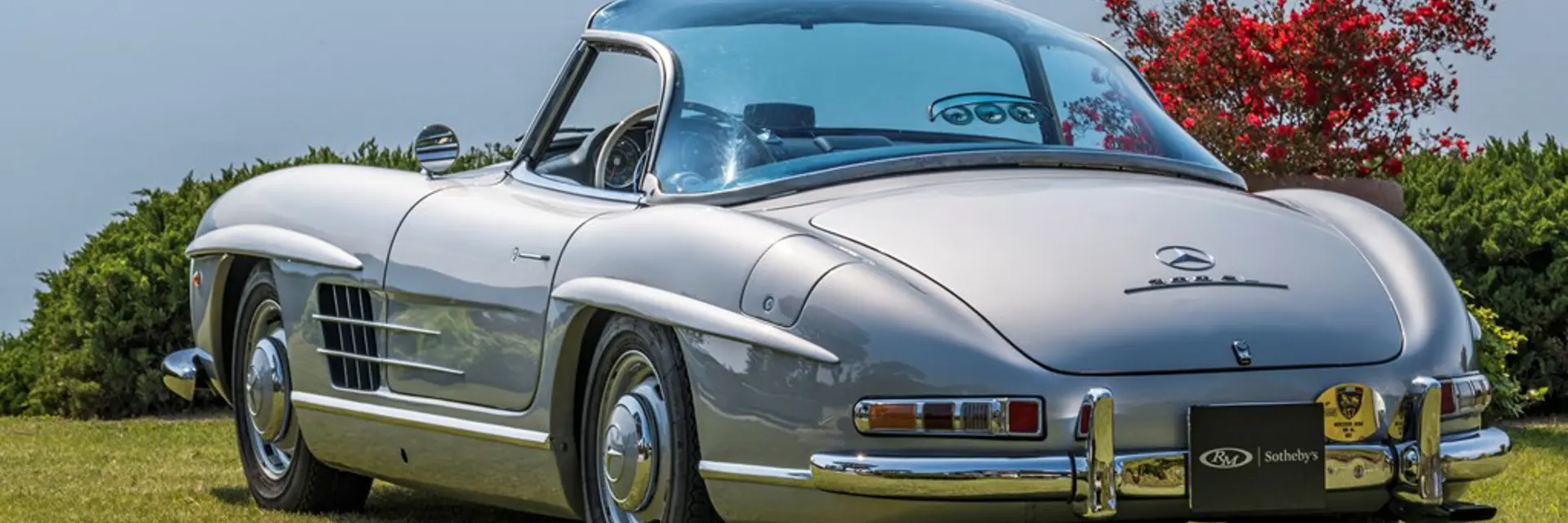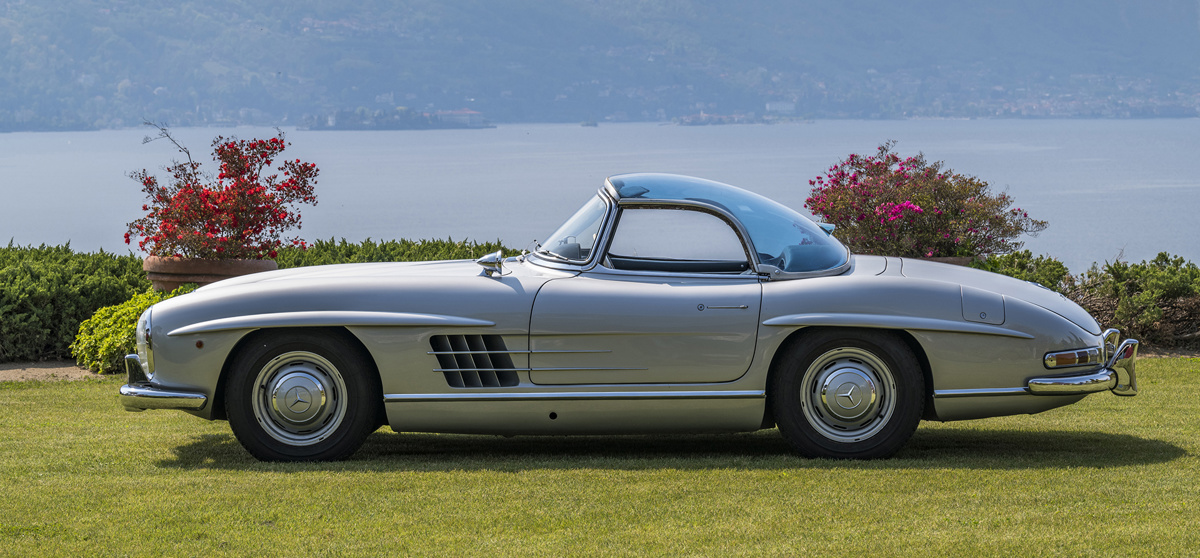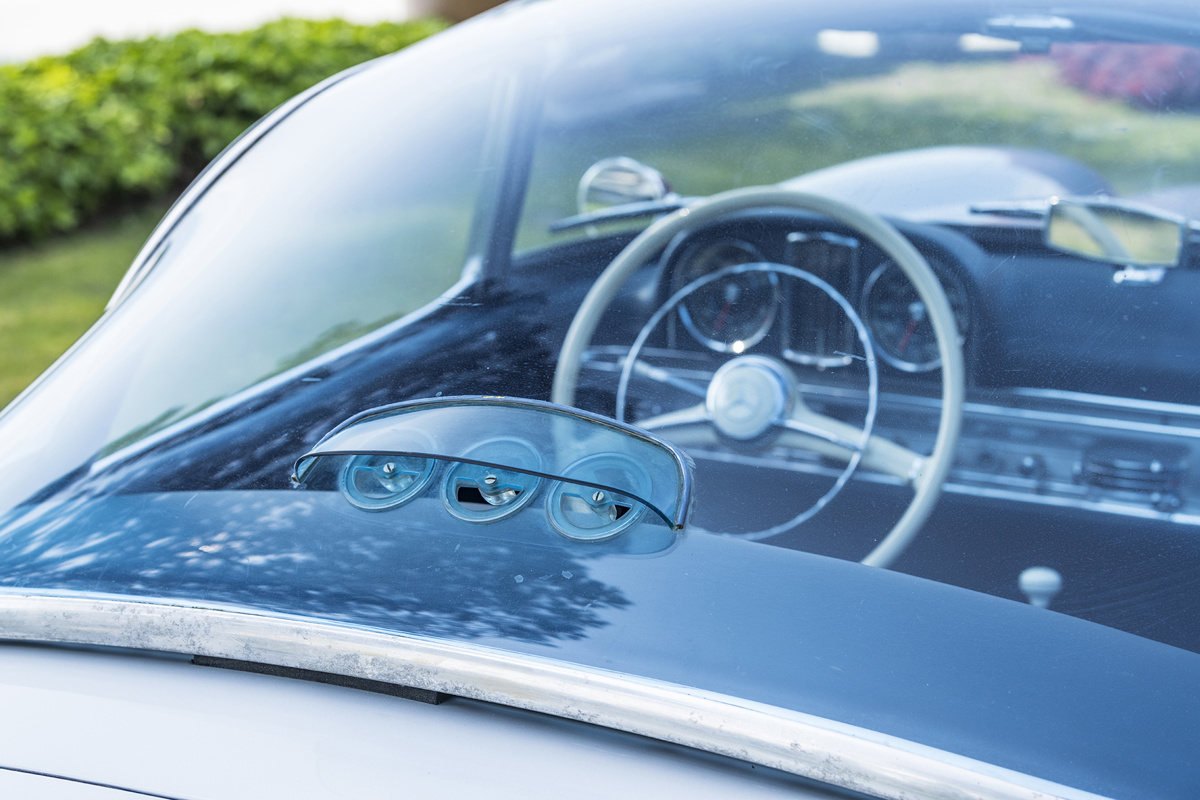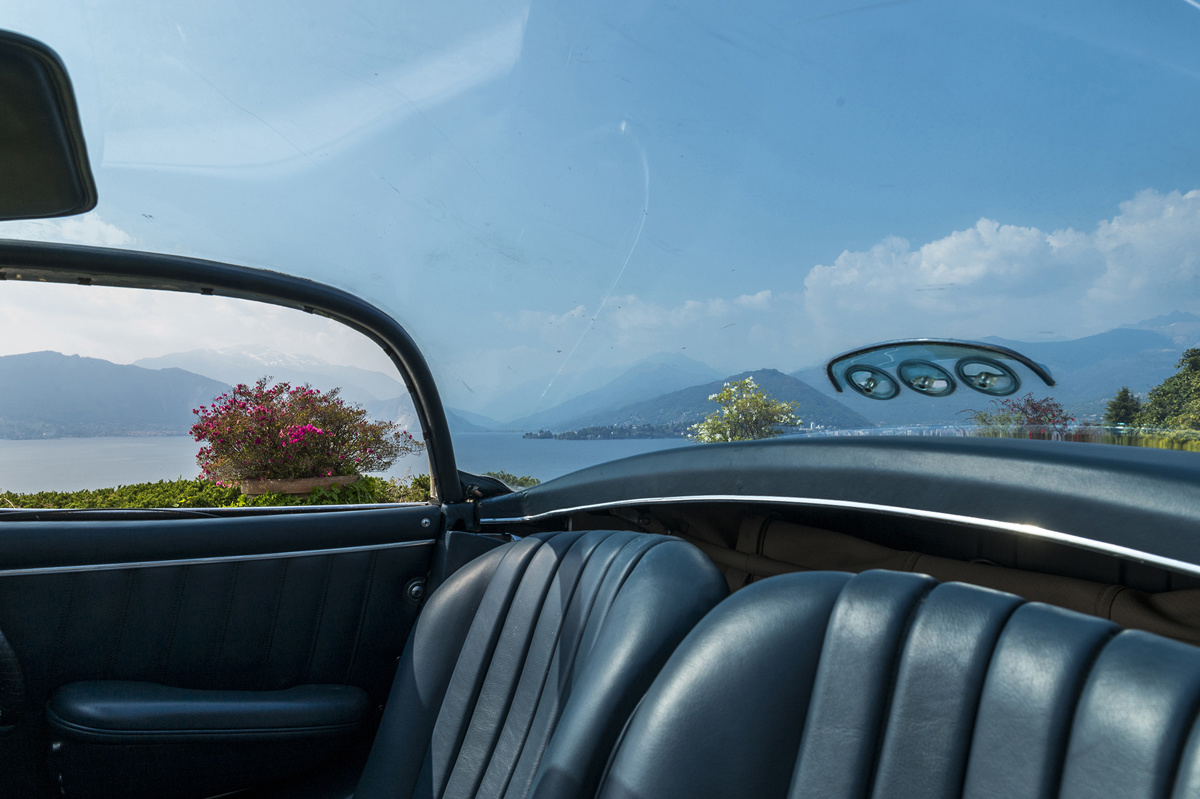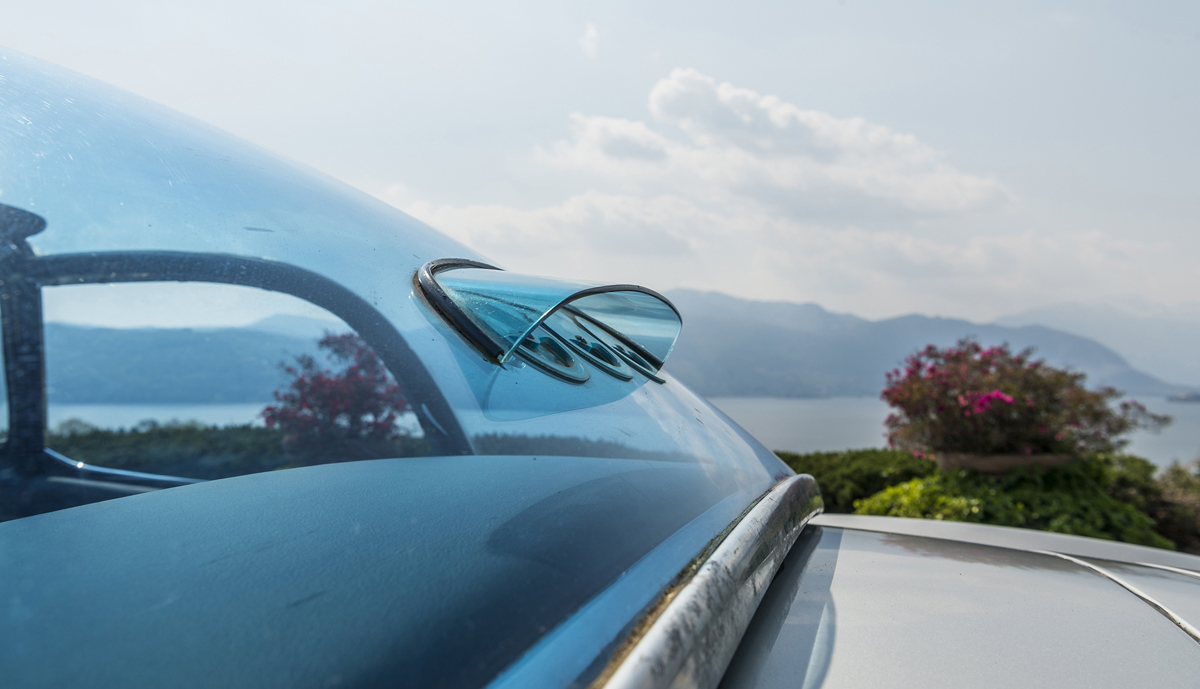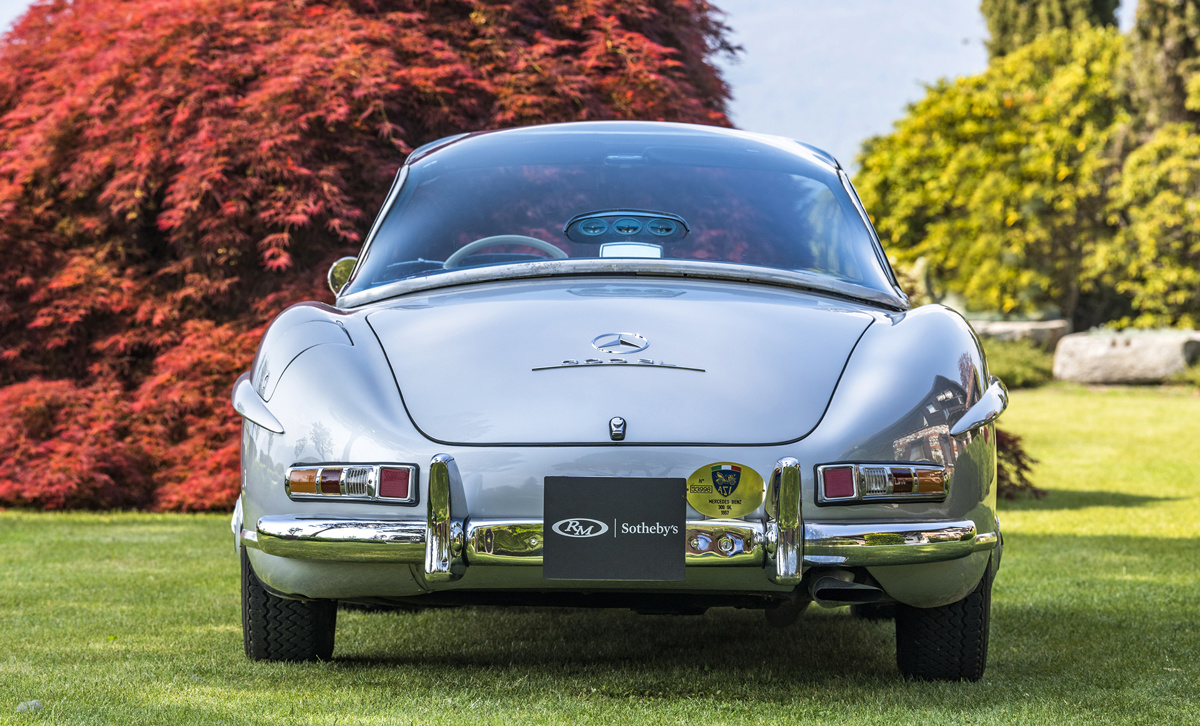Some fashions never lose their style. Instantly beloved upon its 1955 production debut for its signature “Gull Wing” doors, the Mercedes-Benz 300 SL spawned an open-air sibling two years later with the launch of the 1957 Mercedes-Benz 300 SL Roadster. While the roof-mounted doors were no longer possible without a fixed roof to attach them to, the 300 SL Roadster offered ‘Super-Leicht’ sports car construction with the natural luxury of an open-air motoring experience. The few lucky 300 SL Roadsters that were originally specified with Option #168 came with a wooden crate holding an accessory now prized among collectors: A factory-fitted hardtop.
But, of that fraction, an even smaller number of 300 SL Roadsters offered then or now come with the ultimate accessory attached: A fitted hardtop made in-period by the Agusta Helicopter company. While today, we are at least in part accustomed to the ‘Magic Sky Control’ roof featured on modern SL, SLC, and S-Class Mercedes-Benz models, the period-built Plexiglas accessory must have seemed even more extraordinary in the mid-1950s. Over the next subsequent weeks, we will highlight some of the spectacular offerings from RM Sotheby’s upcoming site-specific Milan sale on 15 June 2021, though perhaps none offer the in-cabin experience of this Roadster.
1957 Mercedes-Benz 300 SL Roadster
Estimate €900,000 - €1,100,000 EUR
Unofficially launched four years after the Wright brothers achieved their first flight in America, the first Agusta creation was a biplane from 1910. Looking at the overall form of the 1910 AG1 airplane, one can see laid bare the engineering expertise that would make the private company an innovative builder through both World Wars, and afterwards as well, with the MV Agusta motorcycle brand launching soon after the end of WWII. Though company namesake and founder Count Giovanni Agusta passed away by 1927, his forebearers, including his wife and four sons, found motorcycle and helicopter construction a more peaceful alternative to warplanes.
By the mid-1950s, with the MV Agusta brand making a name for itself in motorcycle racing, the Agusta family purchased a first-year 1955 Mercedes-Benz 300 SL Gullwing from noted Milanese broker Saporiti. The Agusta family would keep this treasured Gullwing for more than six decades in private ownership. As treasured as this Gullwing was, it was no roadster and must have at least in part inspired the creation of a small number of the ultimate closed-roof accessory, as seen on this example.
As the Wright brothers had unknowingly inspired Count Agusta’s first air-bound creation, another American-made innovation would share the same open-air spirit as the Agusta hardtop on this example: Panoramic windshields. As seen on the first Chevrolet Corvette, which General Motors quickly spread to sister brands Cadillac, Oldsmobile, and Buick, the panoramic windshield was a vision of the future, with at least one notable problem.
Besides being a veritable magnet for road chips (with an equally painful replacement cost) panoramic glass typically has a tendency to distort in the corners. Like a pair of prescription eyewear, the thick edges of a mid-1950s General Motors windshield provide a different incidence of refraction when compared to a similar viewpoint through the center. Further still, large panels of glass are heavy, a fact which mattered little on a top-tier Cadillac luxury car, but would upset the ‘Super-Leicht’ ethos of the 300 SL.
The solution was one already familiar to Agusta through their use of high-tech materials in the aviation industry. The same year that Count Agusta took his inaugural flight, 1907, the German-based Röhm & Haas chemical company was founded. Research completed by Otto Röhm led to the creation of Plexiglas in 1933. Despite its costly nature, the benefits of the new compound could be appreciated immediately, as a panel of Plexiglas was significantly lighter than a comparative panel of traditional glass. With the chemical properties of Plexiglas accepting of external bonding, the finished Agusta hard top sported an additional Plexiglas housing for three rear air vents.
With the newfound appreciation of aerodynamics throughout the 1940s and 1950s, Plexiglas found a perfect application in aviation. At that time, its application was rarely applied to a production car. This example, with its Agusta Helicopters-created, blue-hued Plexiglas top, was quite simply a vision of the future. And while Mercedes-Benz has offered the Magic Sky system in several models, its design is more akin to a color-tinted moonroof rather than the expansive greenhouse provided by this ultimate aircraft-grade accessory.
And, in perhaps the ultimate benefit, the top can be removed and stored safely, in case the next owner of this spectacular 300 SL Roadster wishes to experience the open road firsthand. For more of the thrilling, truly unique lots on offer in Milan, check back frequently at our Stay Connected Blog, as we will cover as many as possible before the hammer first falls in the Palazzo Serbelloni on 15 June 2021.

